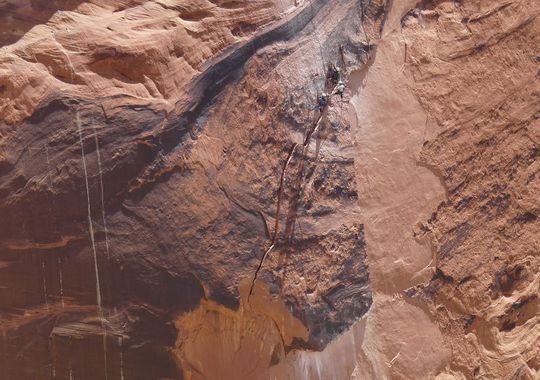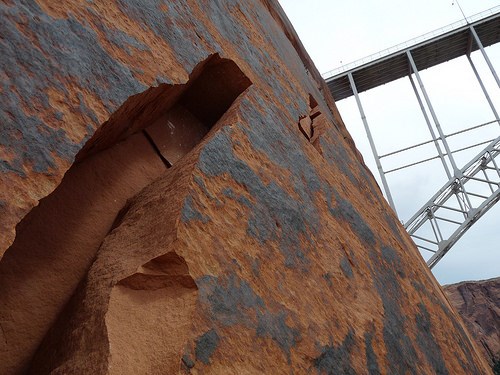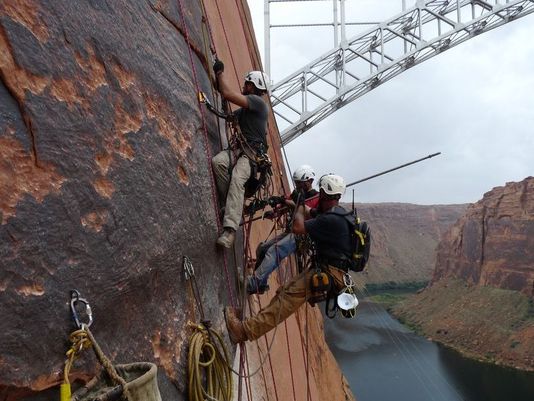7 September 2015
Glen Canyon Dam in Arizona – an interesting rockfall problem
Posted by Dave Petley
Glen Canyon Dam
The Glen Canyon Dam in Arizona is a concrete arch dam on the Colorado River in Arizona, USA. Construction was completed in 1966. The dam provides both hydroelectric power and flow regulation. The US Bureau of Reclamation, who are responsible for the dam, are involved in a project to try to secure a large slab of rock on a near vertical face close to the dam that is threatening to collapse. This is quite a remarkable project. They describe it thus:
Glen Canyon Dam professionals are in the process of securing the 50-feet high, 30-feet wide and up to 4-feet thick slab of Navajo Sandstone to the canyon wall by installing 6- to 8-foot, 1-inch diameter bolts through the slab and into the wall by specialized Reclamation workers called scalers who drill into the rock and install the bolts while hanging from rappelling lines on the canyon wall.
This particular section is just downstream from Glen Canyon Dam and above a machine shop adjacent to the Glen Canyon Dam Powerplant. This area had previously been identified as a risk and six rock bolts were recently installed to temporarily stabilize the area so additional work could be performed at a later date.
Soon after the bolts were installed, Glen Canyon Dam operations staff reported several small rock falls and a notable crack opening around a large slab Friday, August 28. No one was injured from the rock falls.
There are some excellent images of this block in the various news stories that have been written over the weekend, all of which seem to have been taken by Mark Neeley from the Bureau:
.
.
.
.
This is clearly an extraordinarily difficult task. During the development of a canyon sheet joints often form as a result of stress release. These joints often run parallel or subparallel to the face, allowing detachment of blocks to form rockfalls. What is unusual here is that there are few other joints, meaning that the slab that has started to detach is unusually large.






 Dave Petley is the Vice-Chancellor of the University of Hull in the United Kingdom. His blog provides commentary and analysis of landslide events occurring worldwide, including the landslides themselves, latest research, and conferences and meetings.
Dave Petley is the Vice-Chancellor of the University of Hull in the United Kingdom. His blog provides commentary and analysis of landslide events occurring worldwide, including the landslides themselves, latest research, and conferences and meetings.